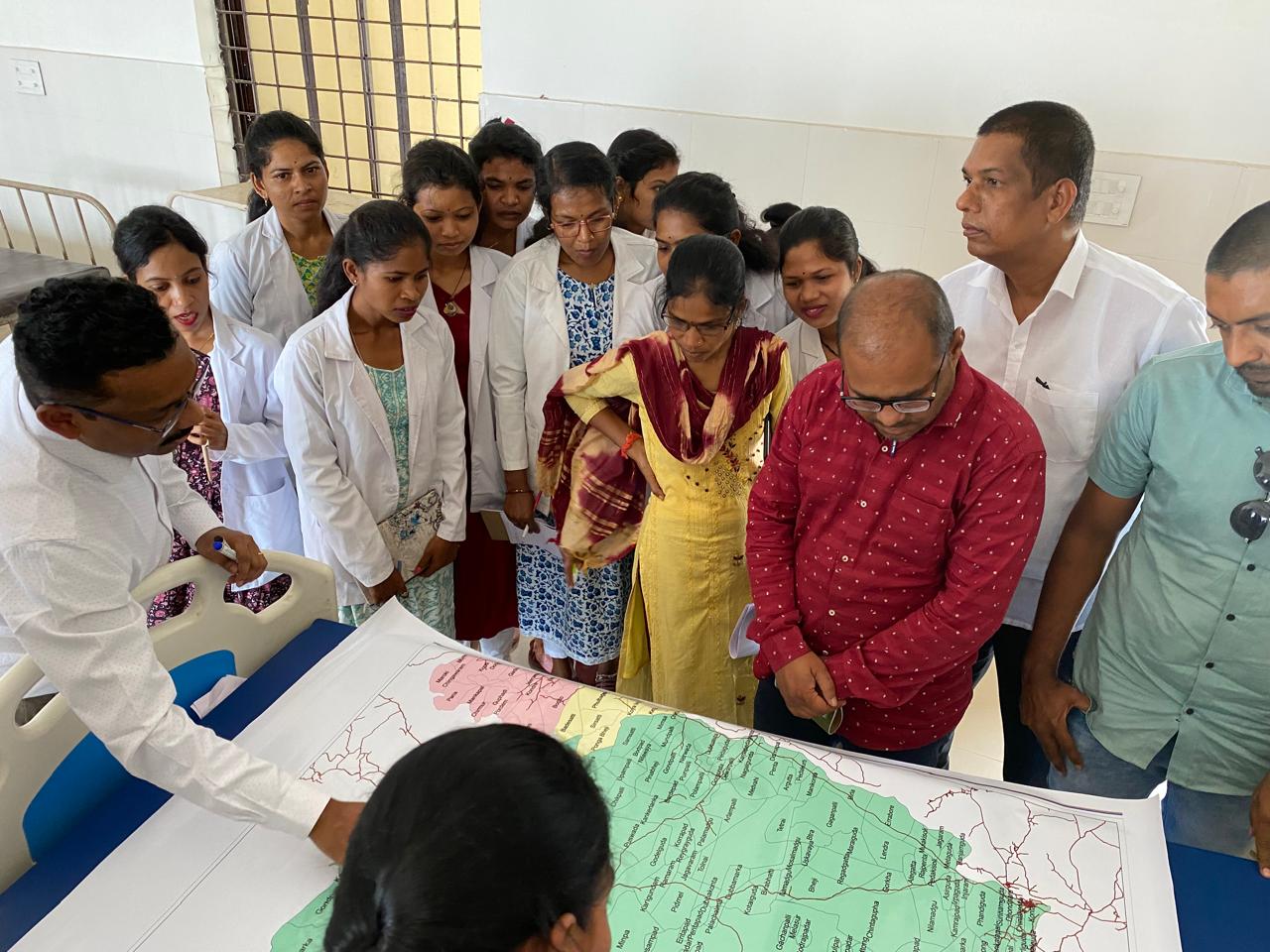The Government of India launched the Aspirational Blocks Programme (ABP) on 7 January 2023 to improve the overall quality of life in 500 Blocks in 27 States and 4 Union Territories (UT). ABP aims to boost service delivery to enhance several socio-economic and development parameters, such as health and nutrition; education; agriculture and allied sciences; basic infrastructure; and social development.
NITI Aayog; national, state and UT governments; and district administration, with assistance from partners, are working in tandem to ensure improved planning and implementation, capacity building and establishing systems for efficient and sustainable service delivery for the rapid development of identified Blocks (sub-district administrative units).
The ABP gives flexibility to state governments and administrators to design customized strategies that are tailored to geography, social context, and local opportunities and challenges. Block officers are identified as ‘Leaders of Change’ and equipped with skills and competencies to drive transformative change in their respective Blocks.
Fifty-two aspirational Blocks in 10 states, including all 27 aspirational Blocks of Rajasthan, have been identified for direct Block support from WHO Country Office for India (WHO India) for improving seven key health indicators. The 10 states include Assam, Chhattisgarh, Jharkhand, Karnataka, Maharashtra, Madhya Pradesh, Odisha, Punjab, Rajasthan, and Uttar Pradesh.
The seven key performance indicators for health and nutrition are:
- Percentage of pregnant women registered for antenatal care (ANC) within the first trimester
- Percentage of institutional deliveries against total reported deliveries
- Percentage of low-birth weight babies (less than 2500 gm)
- Percentage of National Quality Assurance Standards (NQAS)-certified facilities in the Block
- Percentage of person screened for hypertension against targeted population in the Block
- Percentage of person screened for diabetes against targeted population
- Percentage of tuberculosis (TB) cases treated successfully against TB cases notified a year ago
WHO India teams are supporting public health system strengthening through advocacy, gap analysis, planning and implementation activities; stakeholder and intersectoral coordination; orientation and capacity building; programme-specific technical guidance; and supervision, progress tracking and documentation.
/countries/india/a-child-s-height-being-measured-for-the-health-monitoring-of-antenatal-women-and-children-under-five-years-on-village-health-nutrition-day-in-pangarne-primary-health-centre-in-surgana-block--nashik-district--maharash.jpg?sfvrsn=c858c359_3)


/countries/india/blood-pressure-monitoring-at-noncommunicable-diseases-clinic-at-rural-hospital-barhe-community-health-centre-in-surgana-bloc-in-nashik-district.jpg?sfvrsn=f41597e8_3)
/countries/india/a-woman-getting-screened-for-diabetes-at-an-ncd-clinic-in-health-sub-centre-potali-in-kuakonda-block.jpg?sfvrsn=ad0ab9c6_3)
/countries/india/a-community-health-officer-ms-ritu-kunjam-screening-ms-kosi-markam-for-hypertension-at-health-sub-centre-potali-in-kuakonda-block.jpg?sfvrsn=390eab8e_3)
/countries/india/a-mother-and-child-with-their-mother-and-child-protection-card-at-a-monthly-village-health-nutrition-day-session-in-tonto-block.jpg?sfvrsn=69e3ab36_3)
/countries/india/an-asha-(community-health-volunteer)-accompanying-pregnant-women-for-their-antenatal-checkup-at-community-health-centre-in-tonto-block.jpg?sfvrsn=dc1bd8a2_3)
/countries/india/a-one-who-team-on-a-supportive-supervisory-visit-to-sub-health-centre-do-katta.jpg?sfvrsn=c65dbdc1_3)
/countries/india/a-who-team-providing-technical-and-monitoring-support-to-frontline-workers-to-enhance-access-to-public-health-services.jpg?sfvrsn=be435ed4_3)
/countries/india/who-india-team-is-supporting-the-government-in-enhancing-the-delivery-of-primary-health-services.jpg?sfvrsn=31c98da5_3)
/countries/india/technical-discussion-with-health-facility-staff-at-birshing-part-ii-sc-aam.jpg?sfvrsn=cc7f8cb_3)
/countries/india/blood-pressure-measuring-of-geriatric-age-group-by-community-health-officer--birshing-part-ii-sc-aam.jpg?sfvrsn=2eef02dd_3)



